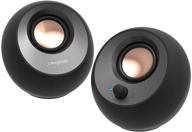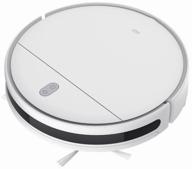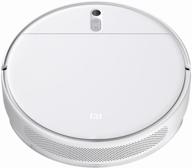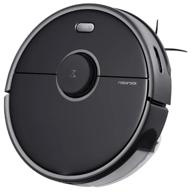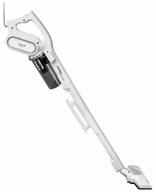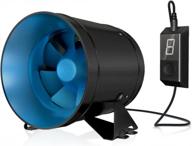Grow Your Greens Without Soil: An Intro to Hydroponics
If you want to grow healthy, thriving plants without the mess of soil, hydroponics may be for you. Hydroponics is a method of growing plants using nutrient-rich water solutions rather than soil. With hydroponics, it's possible to grow vegetables, herbs, fruits, and flowers indoors or in greenhouses year-round.
What is Hydroponics?
Hydroponics involves growing plants by supplying all the nutrients they need through a solution of water and nutrients. This nutrient solution eliminates the need for soil and provides optimal conditions for plant growth. There are several types of hydroponic systems:
- Deep Water Culture (DWC) - Plants are grown in containers with their roots suspended in nutrient-rich water
- NFT (Nutrient Film Technique) - A shallow stream of nutrient solution is continuously pumped to plant roots
- Drip System - Nutrient solution is dripped or sprayed onto plants' roots
- Ebb and Flow/Flood and Drain - Plants' roots are flooded with nutrient solution periodically
- Aeroponics - Plant roots are misted with nutrient solution
Top products in 🍅 Hydroponics


9 Review

Benefits of Hydroponics
There are many advantages to using hydroponics instead of traditional soil gardening:
- Faster growth rates - Plants get constant access to water and nutrients
- Higher yields - Grow more plants in less space
- No weeding or tilling - Less physical labor required
- Reduced risk of disease - No soil pests or pathogens
- Grow anywhere - Hydroponics works indoors or outdoors
| Hydroponics | Soil Gardening |
|---|---|
| Faster growth | Slower growth |
| Higher yields | Lower yields |
| Less labor | More labor-intensive |
Best Plants for Hydroponics
Many different plants thrive in hydroponic systems. Some top choices include:
- Leafy greens - Lettuce, spinach, kale, chard
- Herbs - Basil, mint, oregano, thyme
- Vegetables - Tomatoes, peppers, cucumbers, beans
- Fruits - Strawberries, melons, grapes
- Flowers - Orchids, lilies, gerbera daisies
With a properly designed hydroponic system, providing adequate lighting and nutrients, you can grow a wide variety of plant varieties indoors or in greenhouses year-round.
Hydroponics allows hobby gardeners and commercial growers to produce robust, healthy plants without the need for soil. Give hydroponics a try for fast harvests, high yields, and labor-saving gardening!
What is Hydroponics?
Hydroponics is a method of growing plants without soil. Instead of soil, plants are grown in a nutrient-rich water solution that provides everything the plants need to thrive. Hydroponics allows plants to grow faster and produce higher yields compared to traditional soil gardening.
How Hydroponics Works
In a hydroponic system, plant roots are suspended in a nutrient-rich solution rather than soil. This solution contains all the essential macro- and micronutrients plants need, such as:
- Nitrogen
- Phosphorus
- Potassium
- Calcium
- Magnesium
- Sulfur
- Iron
- Manganese
- Zinc
- Copper
- Boron
- Molybdenum
The nutrient solution is mixed with water and carefully monitored to maintain optimal pH and nutrient levels for plant growth. A hydroponic system provides the nutrient solution directly to the plant's roots using one of several techniques:
- Deep Water Culture (DWC) - Plant roots are suspended in an oxygenated nutrient solution
- NFT (Nutrient Film Technique) - A thin film of nutrient solution flows over the roots
- Drip Irrigation - Nutrient solution is dripped onto the roots
- Ebb and Flow - Roots are flooded with nutrient solution periodically
- Aeroponics - Roots are misted with nutrient solution
Benefits of Hydroponics
There are several advantages to using hydroponics instead of traditional soil gardening:
- Faster growth rates - Constant access to nutrients
- Higher yields - Grow more plants in less space
- Less labor - No weeding, tilling, or watering
- No soil-borne diseases
- Grow anywhere - Works indoors or outdoors
With hydroponics, it's possible to grow healthy plants and high-quality produce year-round without reliance on outdoor growing seasons. Hydroponics allows hobby gardeners and commercial growers to maximize yields in a controlled, soilless environment.
Benefits of Hydroponics
Hydroponics offers many advantages over traditional soil gardening. By providing plants with a perfectly balanced nutrient solution, hydroponics enables faster growth, higher yields, and healthier plants.
Another interesting products
Faster Plant Growth
In hydroponics, plants have constant access to water and essential nutrients. Their growth is not limited by the finite nutrients in soil or delayed by drying out between waterings. With optimal conditions, plants grow up to 25% faster hydroponically than they would in soil.
For example, lettuce grown hydroponically matures in 5 weeks compared to 7 weeks in soil. Tomatoes ripen 10 days faster in a hydroponic system. Herbs like basil and mint grow rapidly and can be harvested multiple times in hydroponics.
Higher Yields
Hydroponic systems take up less space than soil gardening because plants don't need room for extensive root systems. Growers can fit more plants per square foot, maximizing productivity in a small area.
One study found that a hydroponic system yielded 11 lbs of tomatoes per square foot annually, compared to just 1 lb per square foot in soil. Hydroponics can produce up to 10 times more veggies and herbs per square foot than soil!
Similar products
Healthier Plants
Hydroponically-grown plants put more energy into foliage and fruit production because they don't have to grow large roots searching for nutrients like soil plants. Plants get exactly what they need right at the roots, resulting in lush, healthy growth.
Hydroponics eliminates threats from soil-borne diseases, insects, and weeds. Without pesticide use, hydroponic produce is clean and nutritious.
Additional Benefits
- Grow anywhere - indoors or outdoors, year-round
- Less physical labor - no weeding, tilling, or heavy watering
- Conserves water - uses 10x less water than soil gardening
- Automated systems are easy to manage
- Earlier harvests and extended growing seasons
With the ability to grow faster, produce higher yields, maximize space, and eliminate soil-based problems, hydroponics offers many advantages to home gardeners and commercial growers alike.
Types of Hydroponic Systems
There are several different types of hydroponic systems used to grow plants without soil. The main hydroponic techniques include:
Deep Water Culture (DWC)
This method involves suspending plant roots in a reservoir of oxygenated nutrient solution. Airstones oxygenate the water to provide excellent root aeration. DWC systems are easy to set up and maintain, making them popular with home hydroponic gardeners.
DWC works well for growing fast-growing greens like lettuce, as well as tomatoes, peppers, herbs, and strawberries. Plants are supported in containers above the reservoir using clay pebbles, perlite, or foam rafts.
Nutrient Film Technique (NFT)
In an NFT system, a thin film of nutrient solution flows through growing channels housing plant roots. A submersible pump continuously recirculates the solution. Roots are exposed to a constant flow of nutrients and oxygen.
NFT systems work best for small, short-rooted plants like baby greens, herbs, or plants grown in vertical towers. The channels are typically tilted for optimal solution flow.
Drip or Top-feed Systems
A timer-controlled pump delivers nutrient solution to each plant from above. The solution is dripped onto plant roots or run through a top-feeding tube. Excess solution drains back into the reservoir for recirculation.
Top-feed systems allow flexibility in the placement and spacing of plants. They can accommodate plants in different sized containers. Nutrient delivery is controlled for each plant's needs.
Ebb and Flow (Flood and Drain)
The plant containers in an ebb and flow system sit in a tray connected to the reservoir. A pump periodically floods the tray with nutrient solution, soaking the container medium and roots. The solution then drains back to the reservoir.
The flooding cycles provide roots with nutrients and oxygen. Growers can adjust the frequency and duration of floods. Ebb and flow works well for larger plants and can accommodate various container sizes.
With many options available, you can choose the hydroponic technique that best suits your gardening space and plants. All hydroponic methods provide superior growth over soil by delivering optimized nutrients directly to the roots.
What Are The Benefits Of Using Hydroponics For Growing Plants??
Hydroponics is a method of growing plants without soil, using water and nutrient solutions instead. Here are some benefits of using hydroponics for growing plants:
Advantages:
Disadvantages:
What Are The Disadvantages Of Hydroponics Compared To Traditional Farming??
Here are some disadvantages of hydroponics compared to traditional farming:
- Expensive infrastructure: Hydroponic systems are more expensive to acquire and build compared to traditional gardens.
- Requires expertise and finesse: Hydroponic farming requires technical knowledge and experience to set up and maintain.
- Risk of system failure: Hydroponic systems are reliant on a constant power supply and water supply, which can be disrupted by power outages or system failures.
- High-level maintenance and monitoring: Hydroponic systems require frequent monitoring and maintenance to ensure proper nutrient levels, pH levels, and water quality.
- Time-consuming: Hydroponic farming can be time-consuming, especially when it comes to changing the water frequently.
- Energy consumption: Some hydroponic systems depend on grow lights that use significantly more energy than outdoor soil-based agriculture.
- Algae growth: Some hydroponic systems are prone to algae growth, which can degrade the water quality.
- Limited crop variety: Hydroponic systems are best suited for growing certain types of crops, such as leafy greens and herbs, and may not be suitable for growing other crops.
- Expensive to scale up: Scaling up hydroponic systems can be expensive, and the return on investment may be low in the initial stages.
- Not certified as organic: There is debate over whether hydroponic farming should be certified as organic, as plants grown hydroponically may not have the same microbiomes as those grown in soil.





